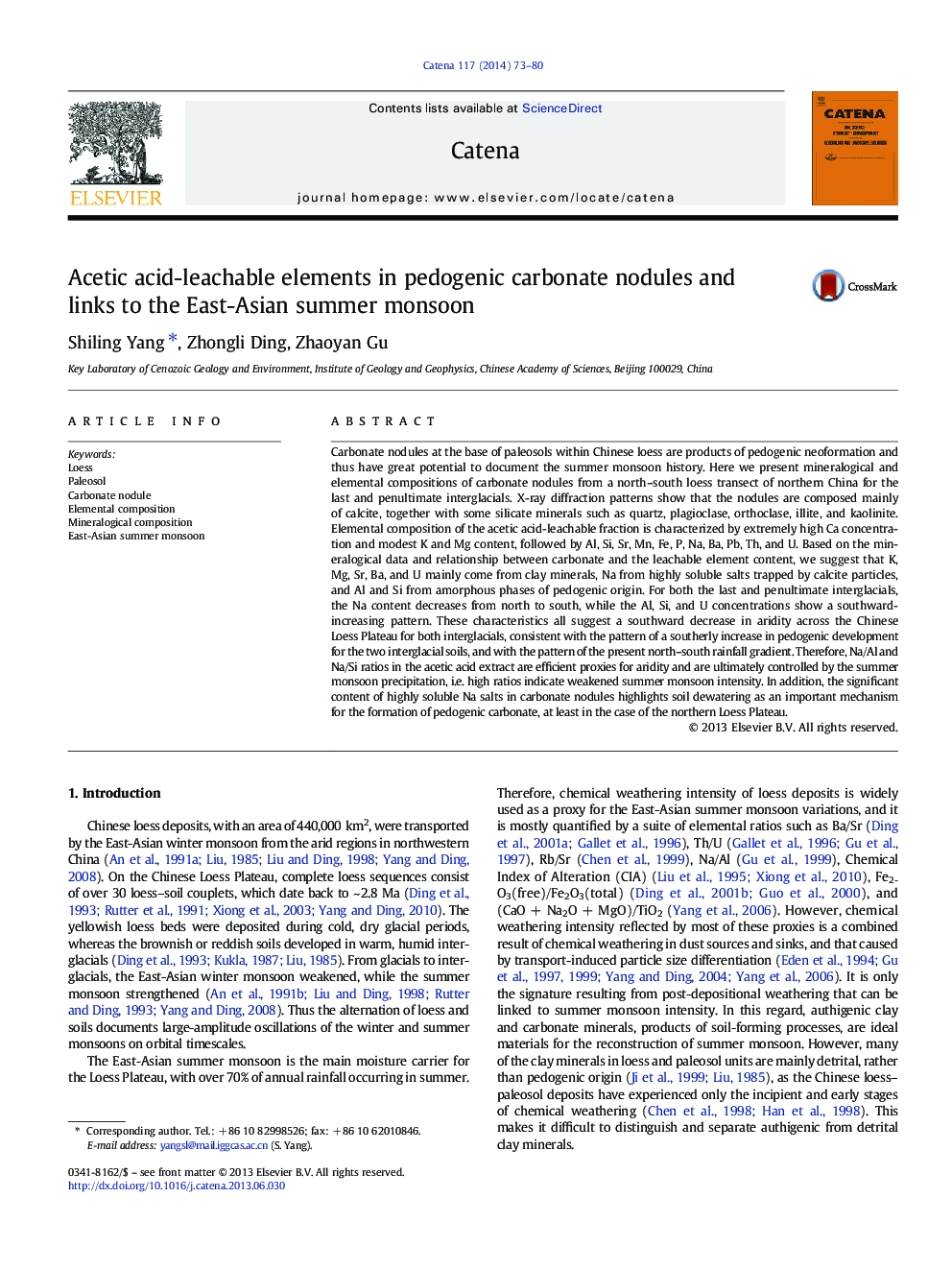| Article ID | Journal | Published Year | Pages | File Type |
|---|---|---|---|---|
| 6408057 | CATENA | 2014 | 8 Pages |
â¢We examined acetic acid-leachable elements in pedogenic carbonate nodules.â¢Acetic acid-leachable Na comes from soluble salts.â¢Acetic acid-leachable Al and Si come from amorphous phases of pedogenic origin.â¢Na/Al and Na/Si ratios are efficient proxies for the summer monsoon rainfall.â¢Soil dewatering is an important mechanism for the formation of carbonate nodules.
Carbonate nodules at the base of paleosols within Chinese loess are products of pedogenic neoformation and thus have great potential to document the summer monsoon history. Here we present mineralogical and elemental compositions of carbonate nodules from a north-south loess transect of northern China for the last and penultimate interglacials. X-ray diffraction patterns show that the nodules are composed mainly of calcite, together with some silicate minerals such as quartz, plagioclase, orthoclase, illite, and kaolinite. Elemental composition of the acetic acid-leachable fraction is characterized by extremely high Ca concentration and modest K and Mg content, followed by Al, Si, Sr, Mn, Fe, P, Na, Ba, Pb, Th, and U. Based on the mineralogical data and relationship between carbonate and the leachable element content, we suggest that K, Mg, Sr, Ba, and U mainly come from clay minerals, Na from highly soluble salts trapped by calcite particles, and Al and Si from amorphous phases of pedogenic origin. For both the last and penultimate interglacials, the Na content decreases from north to south, while the Al, Si, and U concentrations show a southward-increasing pattern. These characteristics all suggest a southward decrease in aridity across the Chinese Loess Plateau for both interglacials, consistent with the pattern of a southerly increase in pedogenic development for the two interglacial soils, and with the pattern of the present north-south rainfall gradient. Therefore, Na/Al and Na/Si ratios in the acetic acid extract are efficient proxies for aridity and are ultimately controlled by the summer monsoon precipitation, i.e. high ratios indicate weakened summer monsoon intensity. In addition, the significant content of highly soluble Na salts in carbonate nodules highlights soil dewatering as an important mechanism for the formation of pedogenic carbonate, at least in the case of the northern Loess Plateau.
